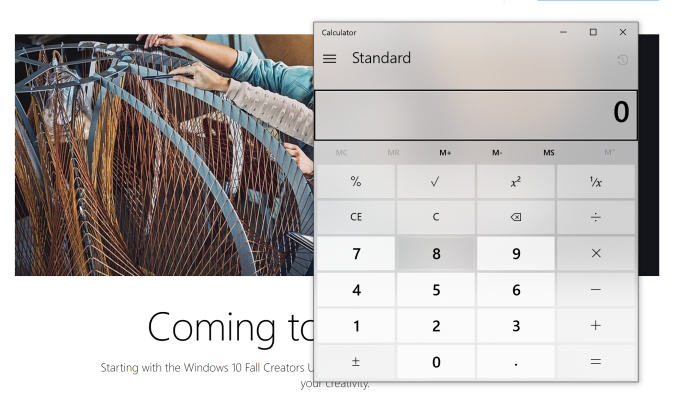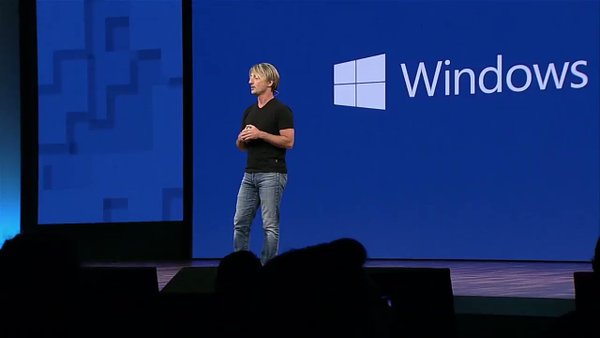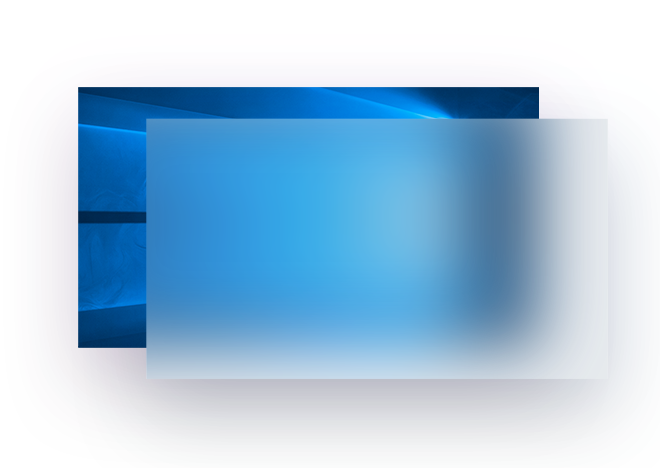The Windows 10 Fall Creators Update Feature Focus
by Brett Howse on November 10, 2017 8:00 AM ESTFluent Design
First announced at the Build 2017 developer’s conference, Fluent Design is the first major overhaul of the Windows 10 design and theme since Windows 10 washed away the remnants of Windows 8 back in 2015. Overall, the original design of Windows 10 has served it well, and it has been made clear after using it for the last several years that lessons were certainly learned from Windows 8, and those lessons were applied to Windows 10 to make a much more coherent and usable design language. But, as with anything, there’s always room for improvement, and the Redmond company is hoping that Fluent Design not only improves on the original, but keeps the UI and theming fresh.
Windows 10 runs on many different devices. The scalability of it is somewhat amazing, and after years of wanting to consolidate it’s OS efforts across device categories, it seems to have finally happened with Windows 10. But that brings some challenges as well, and as hardware has continued to evolve, we’ve started to see many different usage scenarios that traditional mouse and keyboard input would never work on. Touch, of course, is the most obvious and pervasive of these, and falls into the 2D category of input methods, along with keyboard and mouse, stylus, and more of the input methods we are used to. But we now live in a world with virtual reality, and augmented reality, both which live in the 3D space. There’s also 0D devices, such as the recently announced Cortana powered Harmon Kardon Invoke speaker and similar devices such as the Amazon Echo. IoT is becoming pervasive, and appears to be the next growth target in computing.
Fluent Design targets more than just 2D with five basic concepts: light, depth, motion, material, and scale. It may seems like a simple idea, but the key Fluent Design is that it will work well across different device types, but still be very useful on the traditional PC where Windows 10 still has its largest audience.
The move from Windows 7 to Windows 8 was pretty jarring, and the design language was very much flat and blocky. Windows 10 had already added some of the depth back in, but with Fluent Design they have also brought the essence of Windows 7 Aero back, along with new elements as well.
It’s tough to discuss Fluent Design without seeing it, because it’s not just a static idea. All of the elements tie in together to make the experience easier to navigate, more coherent, and more immersive. Check out this video that Microsoft created for their Dev Day:
Light is one of the key elements for selection, and this is doubly the case when you’re thinking of VR and AR technology, where a light gaze can be your pointer. Subtle highlights in lists give a stronger sense of where you are, and what you’re selecting.
Depth plays a big part too, and in the video you can see how going forward and backward in apps gives the feeling of going into an app or image, and then back out, connecting the experience of movement with where you are. This also plays into the motion, where you’ll see parallax scrolling and more.
Material selection is the transparency effects that will likely remind most people of Aero, but it is much more than just blurring. Instead of just background colors and blur, they will be doing multiple layers with Gaussian blur, exclusion blend, color and tint overlays, and tiled noise texture. The acrylic material can bring additional layering and depth to the app as well, but material is also able to be tied into scale, where if an app is in a windowed mode, it can have some blurring, but in a full-screen view, the blurring is eliminated to create focus on the one app.
Scale is likely the most underrated of them all, but Windows 10 is designed to work on everything from IoT to PC to Xbox to Surface Hub, so scale is critical to creating an app which will work across all of those form factors.
It’s hard to deny that Fluent Design is both form and function. There are design elements that are going to improve usability, but those same design elements also just look great. As we move forward, hopefully we’ll start to see more and more of this appear inside of Windows 10 and in the apps we use.
That’s really the only downside to Fluent Design right now though. There’s some of it sprinkled inside of Windows 10, and there’s work to be done to bring it more prominently to the forefront. The Action Center, for instance, has some elements of Fluent Design, but hovering over one of the notifications doesn’t bring any lighting effects to let you know you’re able to select it. Only some of the built-in apps have support right now. This will come over time, and likely even more slowly for third party apps, but it’s not here yet, at least not to its full extent.














95 Comments
View All Comments
prophet001 - Monday, November 13, 2017 - link
Oh that's rich. Google trying to shut off another manufacturer's spyware.rofl
pjcamp - Monday, November 13, 2017 - link
How the hell do you spy on a machine with the power off?BurntMyBacon - Wednesday, November 15, 2017 - link
I think that was referring to a system with power connected, but in the "power off" state. The Intel Management Engine would still draw some power, so it wouldn't really be considered fully powered off. It just hasn't initialized the boot code from UEFI / BIOS / Etc. If I recall correctly, the Intel Management Engine doesn't require boot code to bring it up, but it can be reconfigured by the boot code. This is where coreboot could become useful if you want to disable the engine.Shiitaki - Tuesday, December 5, 2017 - link
It's not that hard to bypass the ME engine, just add an external network card.Ratman6161 - Friday, November 10, 2017 - link
"Microsoft should block ALL applications by default "People love to make sweeping comments like that without thinking through the consequences. Block ALL? Sure. So what does your average home user do then? With everything blocked you have to give them some mechanism to unblock the things they need or want. Unfortunately 99.99% will have no idea....and will click "yes" or "OK" or whatever. OR they won't have any clue what to do and will only know they wanted something and it doesn't work. Then the people who can't figure out how to get to their google docs etc will be on here flaming about the Microsoft Conspiracy to prevent them from using third party products.
Hurr Durr - Saturday, November 11, 2017 - link
This psycho was running around comments not long ago screaming how he "hack-proofed" WinXP and "challenged hackers and various intelligence services around the world" to crack it. Make your conclusions.Bullwinkle-J-Moose - Saturday, December 23, 2017 - link
Which Psycho is that Hurr Durr?I recall running around claiming that they couldn't "wreck" my box but I never said they couldn't "hack" my box
I would NEVER use XP for banking or passwords because even a read only system can be "hacked" but not permanently wrecked
This box is for testing the best of the best malware on the planet and it has often been "hacked"
However, a simple reboot restores it to pristine and fully functional condition by wiping away any malware, so stop trolling with your fake news
Samus - Sunday, November 12, 2017 - link
I trust Microsoft diagnostic submissions a hell of a lot more than amazon, Facebook, or google. As a whole I trust Microsoft and Apple over just about any other tech company because they are the only two that have business models not revolving around ad revenue. That’s partially why Bing failed...it didn’t invade your privacy enough.ddriver - Monday, November 13, 2017 - link
LOL and WOW, how dumb are you. Their business model revolves around milking people in every possible way they can as hard as they can. What an idiocy it is to assume they go though the effort to create an OS that is spyware at its core and they will not monetize on the acquired information just because they have other sources of revenue.prophet001 - Monday, November 13, 2017 - link
They did this in the wake of the sheeple devouring Google's and Apple's creations and paradigms.If you can't beat em, join me.
Microsoft was one of the last bastions of personal privacy in an OS but ya'll told them, through your adoption practices, "hey it's cool. take my stuff" and so they did.